Most of the giant craters on earth are created by human mining, such as the 45-year-old Darvaza gas pit or the world’s largest diamond mine in South Africa. In addition, nature also forms giant pits similar to this one.
1. Darvaza gas pit – Turmenistan
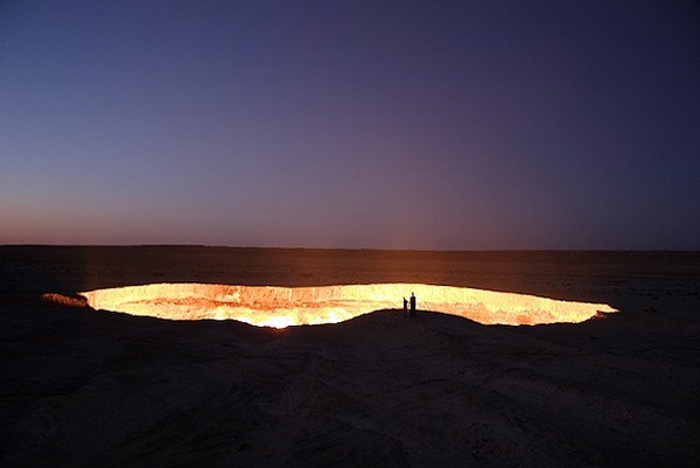
In 1971, geologists discovered an underground gas field in the Darvaza region. During mining, a collapse created a giant hole. To prevent the release of poisonous gas, people burned it down and the Darvaza Pit continues to burn today, creating a unique view of the planet.
2. Kimberly Diamond Mine – South Africa
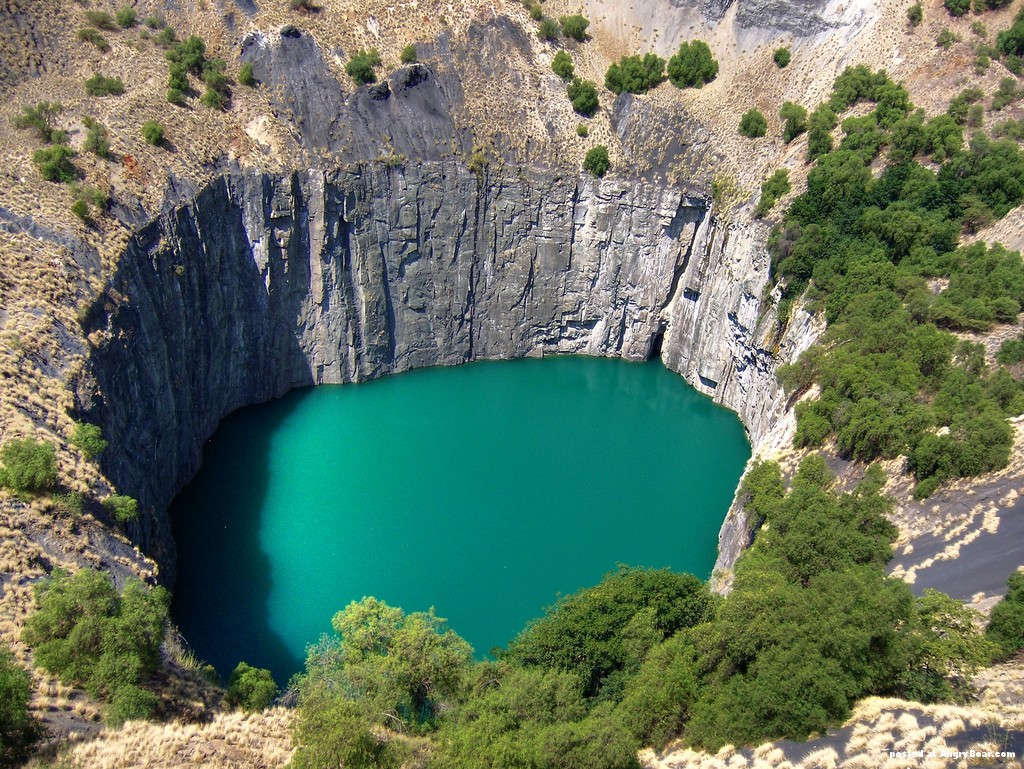
This diamond mine, also known as the Big Hole, is considered the largest man-made hole in the world. From 1866 to 1914, 50,000 workers worked there with rudimentary tools such as hoes and shovels, mining a total of 2,722 kg of diamonds. This work is registered to become a World Heritage Site.
3. Monticello Dam – California
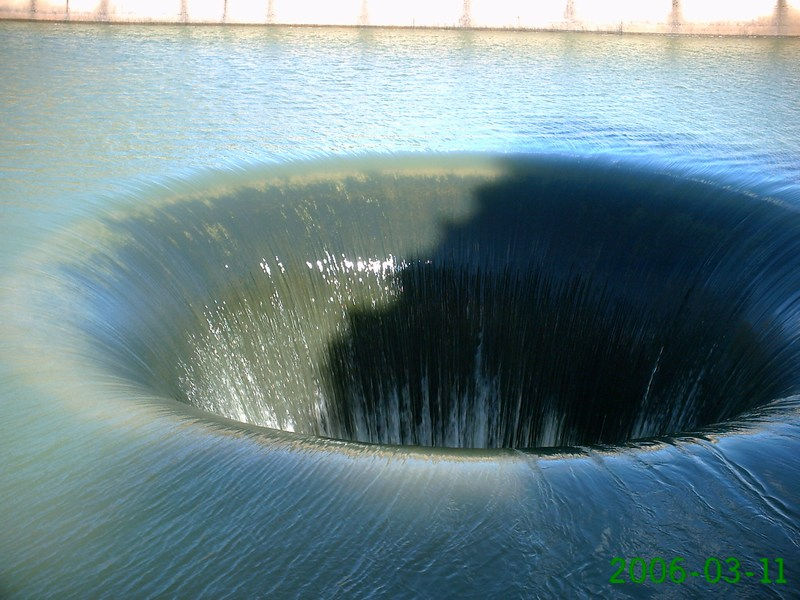
The Monticello Dam is located in Napa County, California, USA, has a circular drainage hole 93 m high, constructed from 249,000 cubic meters of concrete.
The dam is responsible for keeping water out of the Putah River and forming Lake Berryessa (the second largest lake in California).
4. Bingham Mine – Utah
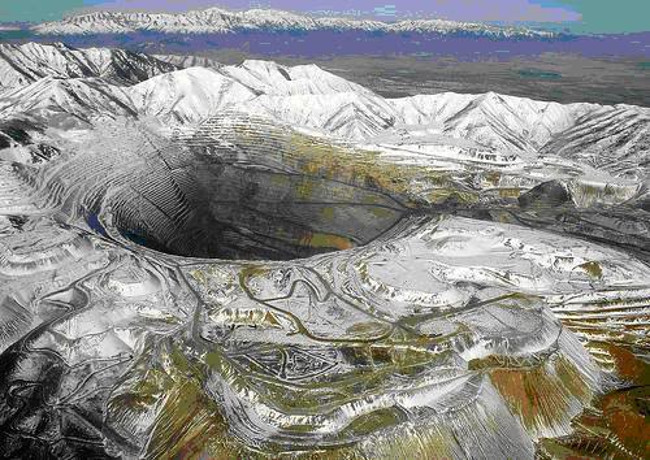
The Bingham Alley copper mines in the Oquirrh Mountains, Utah (USA) are 1.2 km deep and 4 km in diameter. It is also one of the largest man-made pits in the world.
5. The giant green hole – Belize
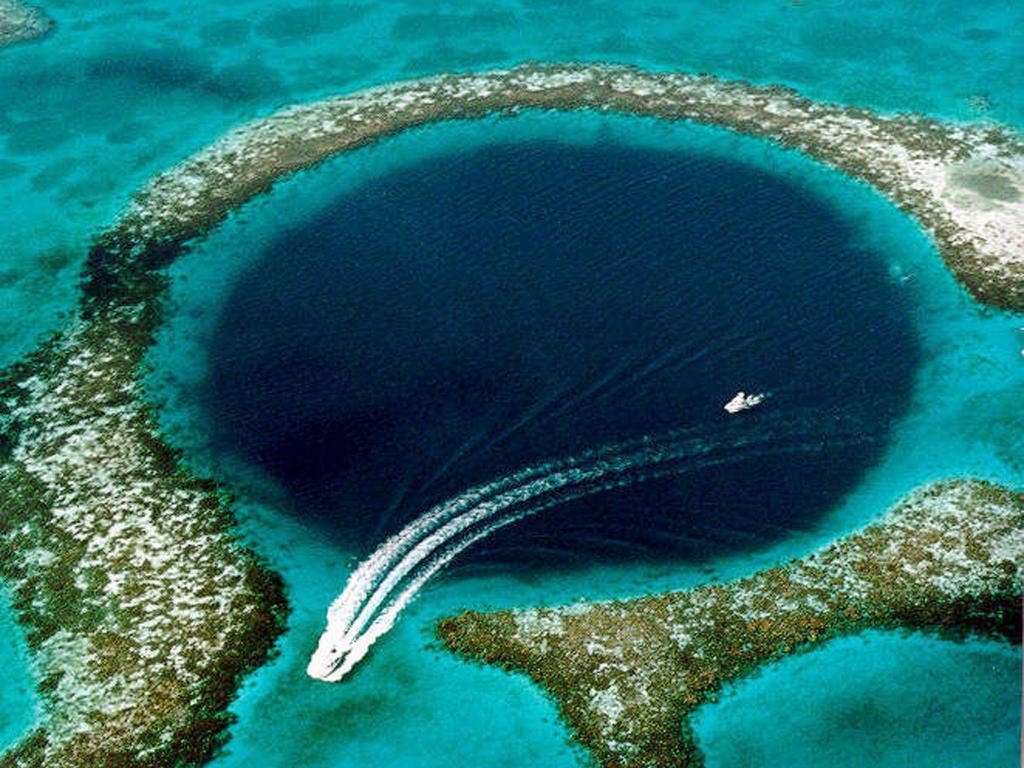
This underwater sinkhole known as the Great Blue Hole is located off the coast of Belize, Central America, formed like a limestone cave at the end of the Ice Age.
6. Mirny Diamond Mine – Siberia
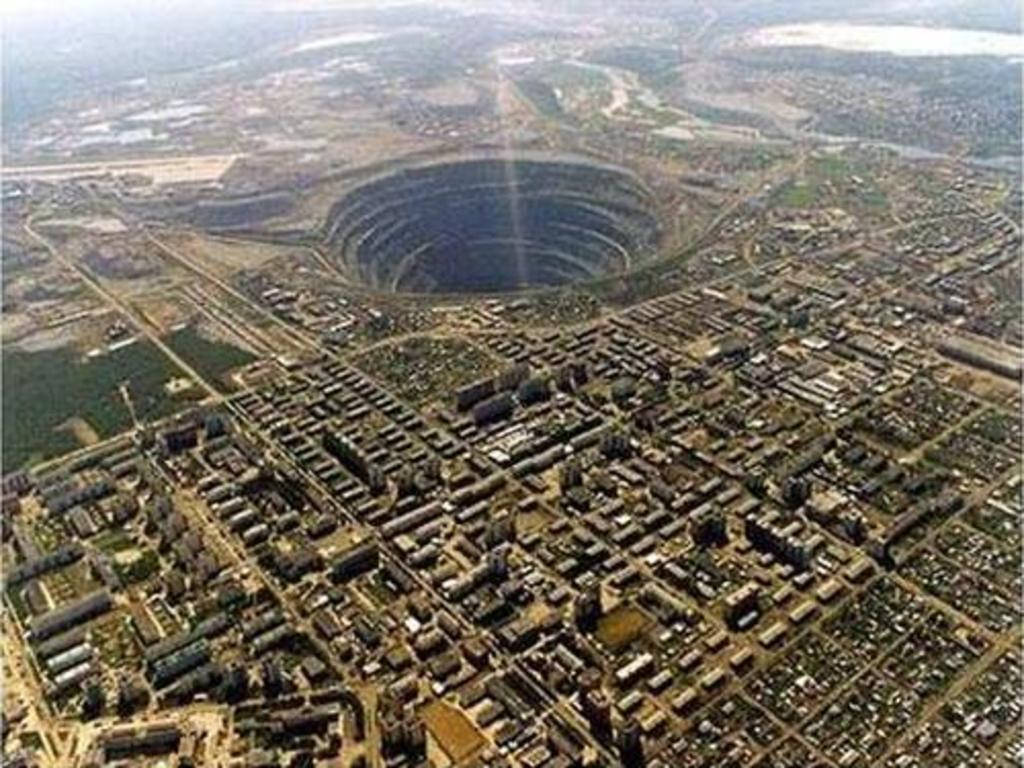
This mine, 525 meters deep and 1,200 meters in diameter, was one of the first and largest Soviet diamond mining sites to end its mission. While on duty, it took the trucks two hours to spiral up from the top of the Mirny mine down.
7. Diavik Diamond Mine – Canada
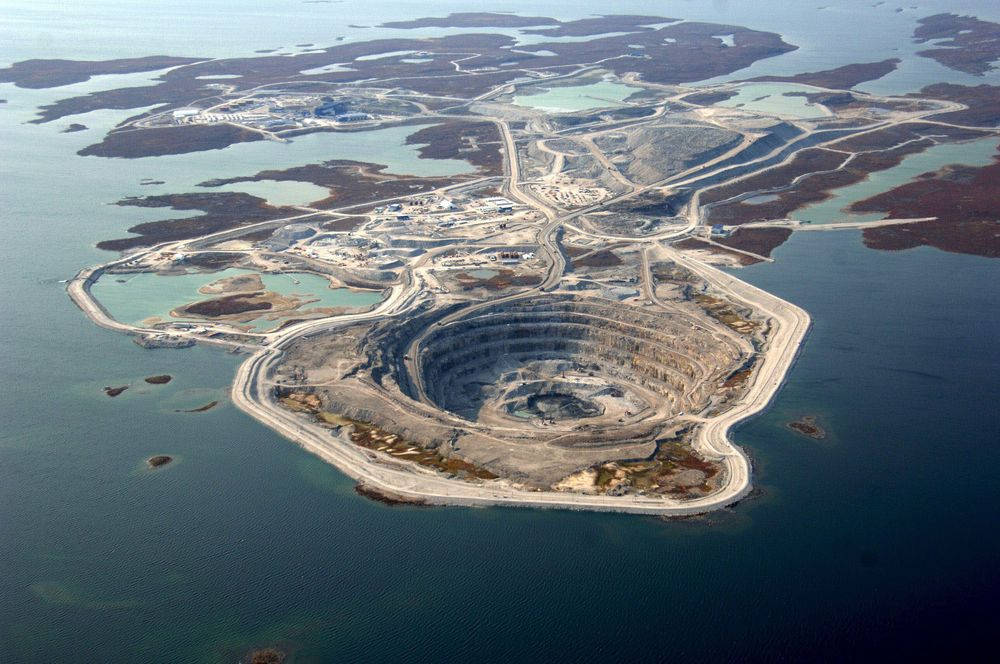
This mine is located in the Northwest Territories of Canada and began operations in 2003, mining 8 million carats (equivalent to approximately 1,600 kg) of diamonds annually.
8. chasms in Guatemala
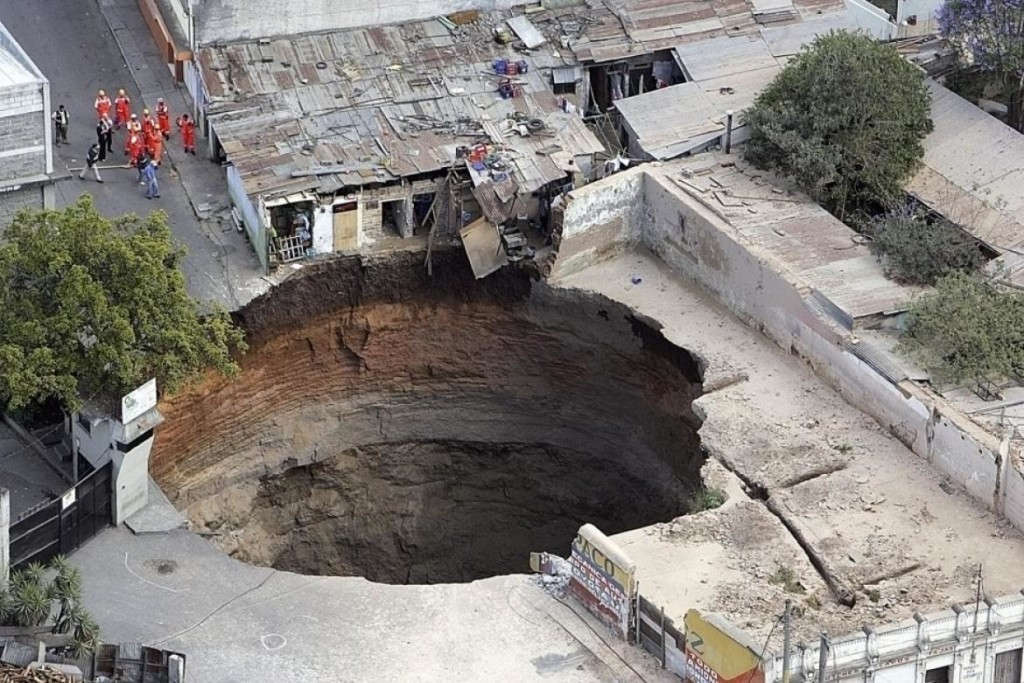
In 2007, a sinkhole nearly 100 meters in diameter swallowed dozens of homes in Guatemala, killing 2 people and evacuating thousands. This sinkhole is created by consecutive heavy rains and underground sewer runoff.
9. Udachnaya mine – Russia

The Udashnaya open-pit diamond mine in Russia was discovered in 1955 and is over 600 meters deep. The owners of this mine plan to cease operations by 2010 to switch to underground mining.
10. Chuquicamata mine – Chile
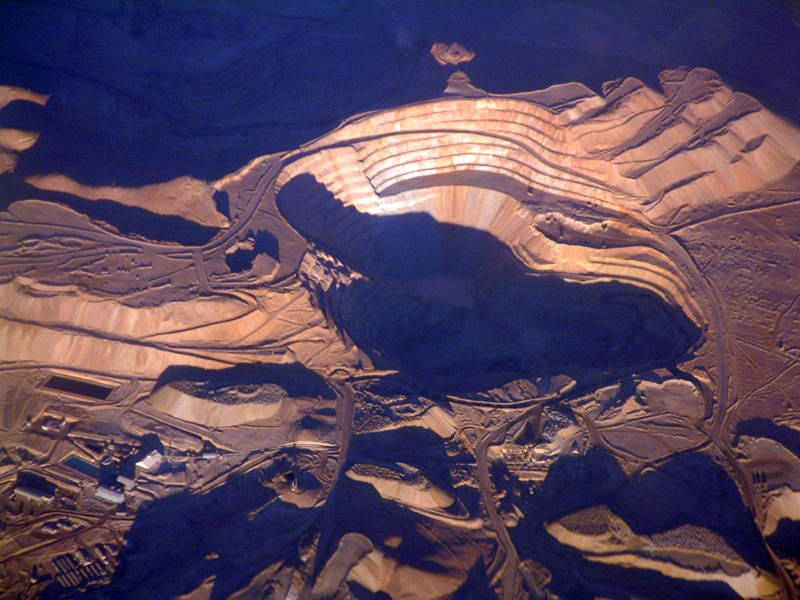
It is the surface copper mine with the largest total production in the world, although it is not the first mine in terms of scale of operation. The mine is over 850 meters deep.
11. St. Well Patrick’s, Orvieto, Italy
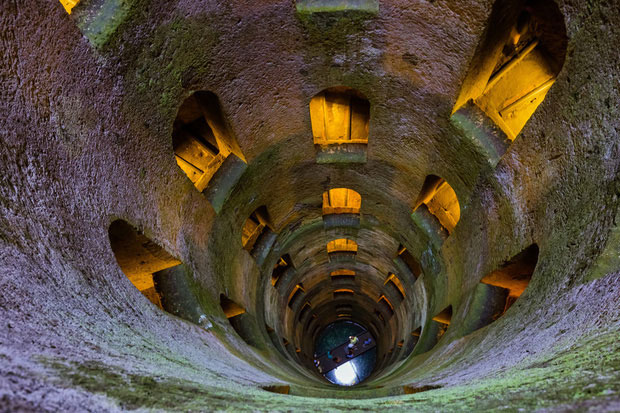
This deep and elaborate well was built in 1527 under the auspices of the Church after Pope Clement VII left Rome and settled in Orvieto. During the siege of Orvieto, this well became the main source of water and transport in the region. Water is taken directly from the well and transported through the inner tunnel to reach the fortress of Albornoz.
12. Yasur Crater, Vanuatu Island
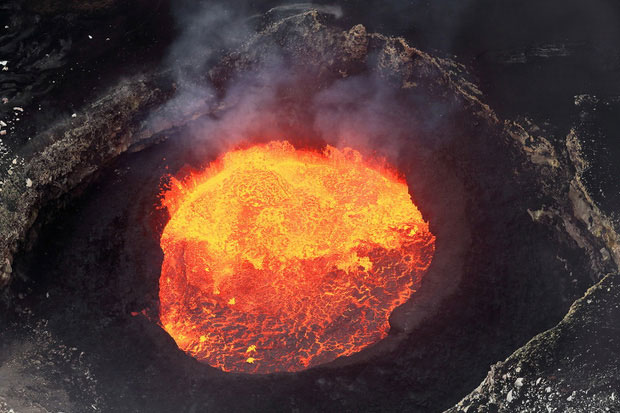
Yasur is an active volcano on the island of Vanuatu. Its last eruption was in 2017. Native tribes say it is the residence of an ancient god. In order to avoid angering the gods, indigenous people rarely sneak near the volcano, only wizards and village elders are allowed to go there when something is needed.
However, tourists are not afraid of this legend, many people come to Yasur to admire its beauty as well as to seek thrills, because it is one of the still active volcanoes, the most accessible in the world.
13. Reverse turn in Masons, Portugal
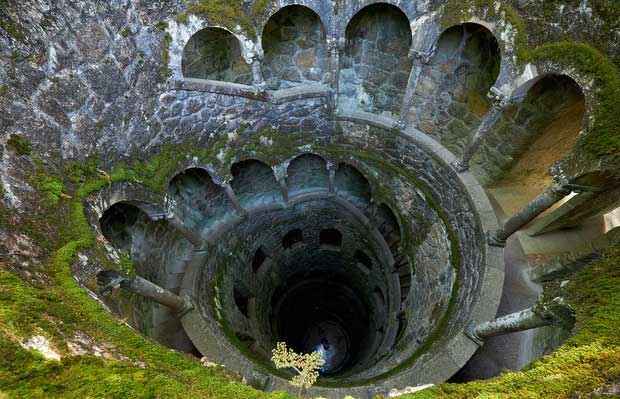
This inverted tower is essentially a giant well built at the start of the 20th century in Sintra, a Portuguese town. People here see it as a sacred place, a place of transition, of interference between light and dark. The spiral steps represent the paths of souls to heaven or to hell. The size of the tower is quite impressive, capable of accommodating a 10-story building.
14. Er Wang Dong Cave, China

A group of explorers discovered this vast cave system. It has a separate internal ecosystem of alien creatures that cannot be found anywhere else on the planet. You can even bask in the mist or watch the clouds form inside the cave.
15. Caves of Eisriesenwelt, Austria
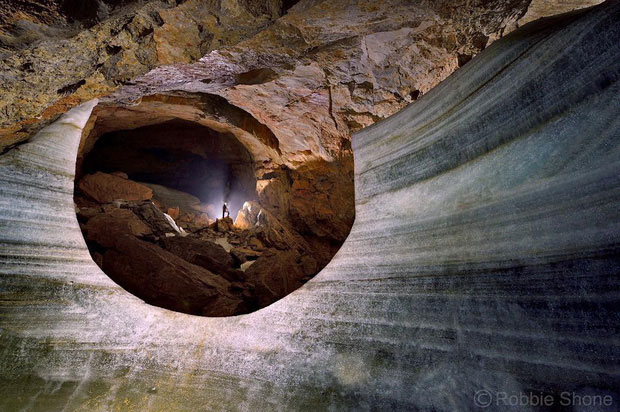
This cave is located at an altitude of over 1500m. Its name means “world of giant ice men”. This is considered to be the largest ice cave in the world with a length of almost 42 km and a depth of almost 400 m. Previously, to reach the cave, explorers had to climb 1500m. However, today people have built a cable car system to help visitors to this beautiful smoking area within minutes.
16. Caves of Cerro Sarisariñama, Venezuela
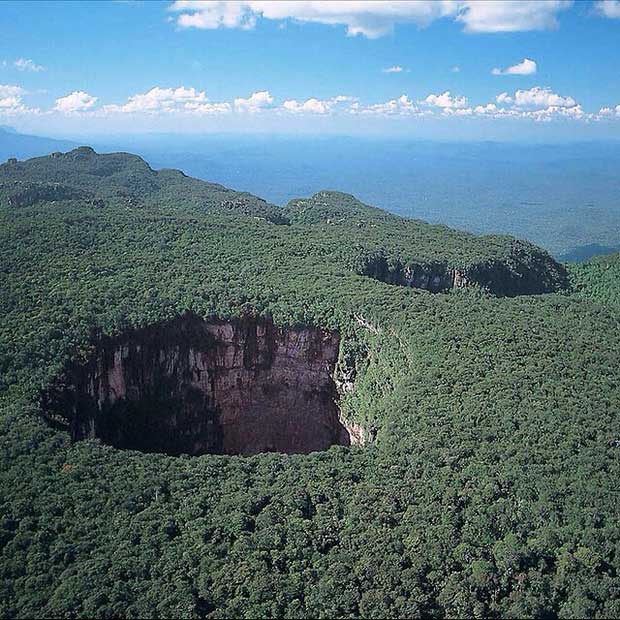
In Venezuela, there are many towering mountains with flat tops that were once vast plateaus. Hundreds of years ago, numerous landslides transformed these mountains into giant caves isolated from the outside world, the largest in Mount Sarisariñama, in the state of Bolívar, Venezuela. Inside the cave there is a separate ecosystem, even many large trees grow. The landscape here makes you think of a real hell.
17. Mutnovsky Ice Cave, Russia
Mutnovsky Mountains on the Kamchatka Peninsula, Russia is home to a strange ice cave. Although located right next to the volcano, this cave remains unscathed and remained icy for many years. The dome is covered with colorful ice cubes which are extremely beautiful. Unfortunately, due to the impact of climate change, the ice in this cave has melted considerably, making the ice caps very thin.


